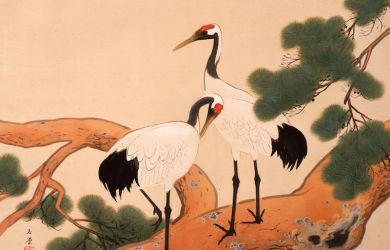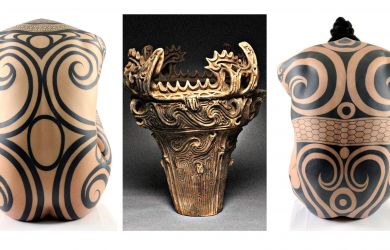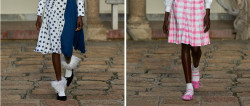
October 8, 2009
Shingo Katayama
The other guy in Japanese golf isn’t going down without a fight
By Metropolis
Originally published on metropolis.co.jp on October 2009

Courtesy of The Golf Times
It’s easy to forget that there’s more than one male golfer in Japan. As far as the media is concerned, the sport pretty much begins and ends with Ryo Ishikawa. That isn’t surprising, of course: Ishikawa is the real deal. He’s long off the tee, an excellent putter, and is getting used to winning—and he’s only just turned 18. The teenager currently leads the money rankings in Japan with a sizeable ¥22 million edge over his nearest rivals, fellow rising star Yuta Ikeda and Shingo Katayama.
Just as Yuri Fudo became the forgotten woman of the JLPGA Tour when younger, prettier golfers like Ai Miyazato and Momoko Ueda started winning, Katayama is often overlooked. Like Fudo, he has an awesome tour record, finishing in the top ten on the money list for the last decade and winning it five times, including four of the past five years. And lest we forget, he finished fourth in this year’s prestigious Masters tournament in the US.
With the European and American tours winding down, many foreign golfers come to Japan to compete, giving local guys like Katayama a chance to show their class.
“There’s always a debate about whether the level of golf in Japan is high or low, but if a foreign golfer isn’t in good condition when they come over here, they won’t make the cut,” the golfer told a meeting of foreign journalists in Tokyo earlier this year. “I think those overseas golfers who come to play here soon realize how the level of Japanese golf has risen.”
Autumn is a busy time for Japan’s golfers—and a lucrative one. The country’s three richest tournaments place in the fall: the Japan Open Golf Championship in Saitama, the Dunlop Phoenix in Miyazaki, and the Casio World Open in Kochi. Each has a total purse of ¥200 million.
To be sure, Katayama enjoys the autumn swing. For one, it’s when he started doffing his crazy cowboy hat. “I wore it for the first time in November 2000, when there were four tournaments left on the calendar,” he explains. “I won three of them and I took the money title for the first time because of that, so it brought me great luck.”
Despite his success at the Masters this year, the 36-year-old isn’t planning on moving overseas. “When I look at the high level of the Japanese tour now and the settings of the courses, I think if you know what to do here, you can even do well in the majors,” he explains. “I like to look at myself rationally, and when I think about playing overseas, I realize that it is something that just doesn’t seem to suit me.”
You’re unlikely to hear the same thing from Ishikawa, who is keen to test his game against the world’s best. Don’t expect him to hang around for long: if you want to see him, the fall tour might be your last chance. In addition to the Japan Open, season-ending tournaments in the Kanto region include the Canon Open, the Bridgestone Open, The Championship by Lexus, the Mitsui Sumitomo VISA Taiheiyo Masters and the final event on the JGTO tour, the Golf Nippon Series JT Cup.
So far, the list of foreign competitors hasn’t been confirmed for these tournaments, but Ishikawa and Katayama will be at most, if not all, of them. Katayama believes that if it comes down to a battle between the two, he will have the edge.
“If there is a moment when something has to be done to win a tournament, the important thing… is the experience you have accumulated up to that point,” he explains. “Young golfers find it harder to keep winning because they lack such experience.”
Sounds like a challenge.
Japan Open. Oct 15-18, 8am. ¥3,000-¥5,000. Musashi Country Club, Toyooka Course, Saitama Prefecture. Tel: 04-2962-4151/03-3566-0003.







